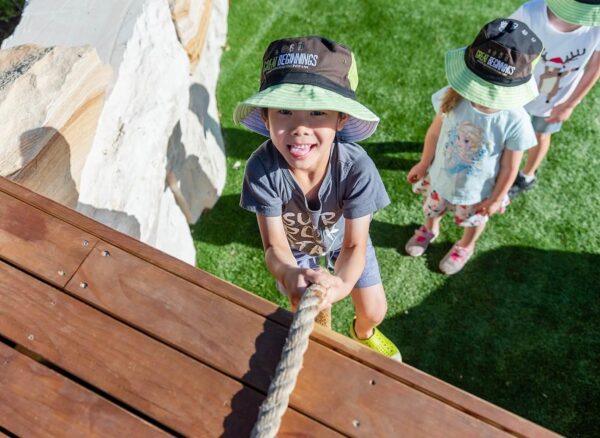Dartmouth anthropologists speak in favour of risk – an ancestral need to push limits

A team of anthropologists from Dartmouth University have spoken out in favour of risky play, and associated play equipment, saying it responds to “a biological need passed on from apes and early humans that may be critical to childhood development.”
Speaking specifically about monkey bars, the researchers warn against what they term “surplus safety” on playgrounds, which may come at the expense of children being allowed to independently test and expand their physical and cognitive abilities in a context in which injury is possible but avoidable.
“One of the ironies of modern parenting is that our children have never been physically safer and yet we have never been more worried about them,” Associate Professor Zane Thayer said.
“We need to consider the potential longer-term benefits of allowing them to engage in play where there is some level of risk so they can overcome challenges on their own and learn from it when it doesn’t work out.”
“Generally, researchers have found that risky play helps children build resilience and confidence, skills that resonate throughout life,” she continued. “We focus on jungle gyms and monkey bars as an easy way for children to engage in risky and thrill-seeking play.”
The researchers describe how the physiology—and fossilized injuries—of early humans show juveniles likely engaged in extensive swinging, climbing, jumping, and other risky play. The 3.3-million-year-old remains of a female Australopithecus afarensis child known as Selam exhibit shoulders, fingers, and feet adapted to climbing in trees and hanging from limbs, like modern apes. The 3.2-million-year-old skeleton of Lucy, an adult female of the same species, shows healed fractures thought to result from falls as high as 40 feet.
“Fossil evidence suggests that the children of early humans spent as much time in trees as adults did,” first author Luke Fannin added.
“If you’re spending all that time in trees as a juvenile, you need confidence, because falling from a tree can be devastating and possibly fatal for a large ape or hominin,” he continued. “We see in modern nonhuman primates that juveniles test the limits of what they can and can’t do, what the risks are, and how to respond. That leads to the climbing skills we see in adults.”
Studies of hospital admissions show that jungle gyms and monkey bars result in more childhood fractures and hospital visits than any other playground equipment, the researchers report. Despite this the risk of children being injured on a playground is relatively low.
Popular

Practice
Quality
Research
Reframing behaviour and responsive strategies for early learning environments
2025-05-13 16:35:42
by Fiona Alston

Practice
Quality
Research
Unlocking the power of intentional teaching
2025-05-21 11:00:08
by Fiona Alston

Practice
Quality
Research
How visual literacy enhances pedagogy and planning
2025-05-21 10:00:14
by Fiona Alston


















